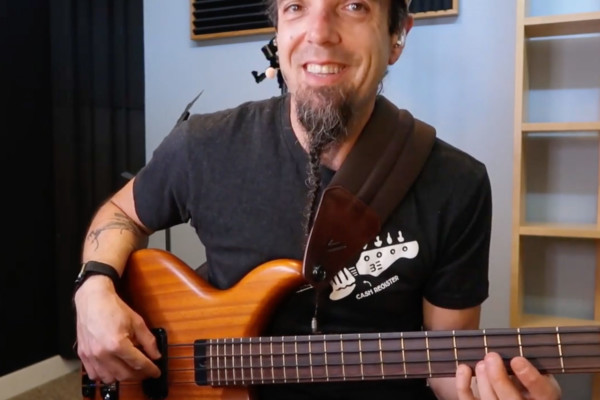Ask Damian Erskine: Reading Scenarios
Q: Quick followup question to a recent No Treble column… In your article you mention reading as being a big part of being a professional musician. What types of reading scenarios are put in-front of you as a bassist?
A: It really depends on the styles of music you might try and play (especially with regard to trying to be a freelance “jack of all styles” kind of player).
For the most part, chord charts are the bulk of what you’ll need to be comfortable with. It’s obviously a good idea to be familiar enough with notation to spot unison lines or specific passages beforehand and be able to work them out quickly.
However, I take a lot of Salsa gigs (I’ve had this experience with African styled gigs here and there, too). For styles that require a very specific feel and, maybe, a non-Western approach, I find that band leaders often have actual bass lines written out for 95% of the chart (also common in some big band arrangements I’ve seen).
Especially for Salsa (and the related styles) and African derived music, your reading (actual notation) needs to be pretty strong. There is a LOT of rhythmic information (ties, over the bar line stuff, dotted notes, etc.). It’s too much to be able to count and sight-read perfectly without being really up on your reading chops. It also helps if you’ve spent enough time with that style to begin to quickly recognize what certain rhythmic patterns sound and feel like, so you’re not counting and sweating bullets page after page.
Jazz trio? Chord charts
Heavy Latin stuff? You’re basically reading what’s commonly referred to as fly s**t on a page. Lots of actual notes with heavy rhythmic stuff attached.
I actually used to practice sight-reading Charlie Parker and Coltrane to work up my reading chops.
I sometimes still do that AT TEMPO! That is a whole other way to develop chart chops (or “getting lost without causing a train wreck” chops). If you’re reading something at 200bpm that just is NOT sight-readable at 200bpm, you’re also working your ability to get lost, re-orient and catch up with the chart without every losing your place!! That skill is priceless.
There will come a time when you’re reading on the gig and you get lost! If you can come back in strong 2 bars later, you’ve done your job! If you fumble around for 16 bars (or worse yet, never find your place back) you’ve just made the whole band sound bad for an eternity (musically speaking).
Remember this: IT IS ALWAYS BETTER TO JUST STOP, QUICKLY RE-ORIENT AND COME BACK IN STRONG AFTER A BAR OR TWO THAN IT IS TO STUMBLE AROUND FOR 8 BARS TRYING TO CATCH UP. Or guessing at where you are. Just stop and figure it out. Better to play NO notes than all the wrong ones!
For a Latin Jazz example (and it’s a GREAT book to work through) pick up Oscar Stagnaro’s “Latin Bass Book”. It’s got 3 CDs worth of great music with every bass line notated. That is very much what I’m accustomed to seeing from 11-piece Latin bands, etc.
And try these two charts (PDF format): Dame Un Tragito and Oye Mi Guangaunco.
Hope that helps!
Have a question for Damian Erskine? Send it to [email protected]. Check out Damian’s instructional books, Right Hand Drive and The Improviser’s Path.



